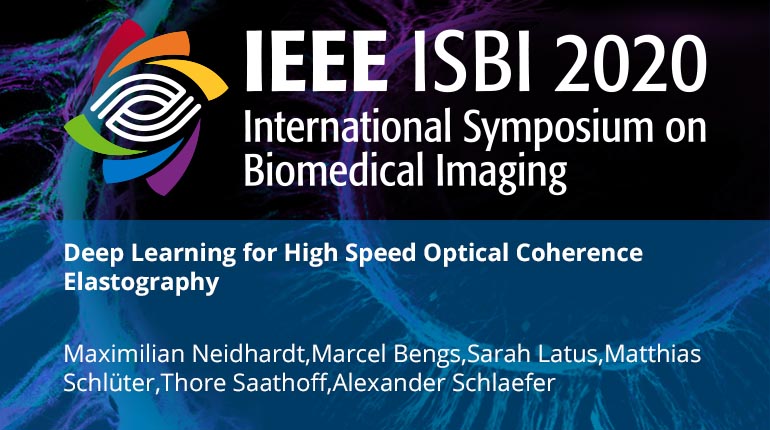Collection:

Mechanical properties of tissue provide valuable information for identifying lesions. One approach to obtain quantitative estimates of elastic properties is shear wave elastography with optical coherence elastography (OCE). However, given the shear wave velocity, it is still difficult to estimate elastic properties. Hence, we propose deep learning to directly predict elastic tissue properties from OCE data. We acquire 2D images with a frame rate of 30 kHz and use convolutional neural networks to predict gelatin concentration, which we use as a surrogate for tissue elasticity. We compare our deep learning approach to predictions from conventional regression models, using the shear wave velocity as a feature. Mean absolut prediction errors for the conventional approaches range from 1.32+-0.98 p.p. to 1.57+-1.30 p.p. whereas we report an error of 0.90+-0.84 p.p. for the convolutional neural network with 3D spatio-temporal input. Our results indicate that deep learning on spatio-temporal data outperforms elastography based on explicit shear wave velocity estimation.
- IEEE MemberUS $11.00
- Society MemberUS $0.00
- IEEE Student MemberUS $11.00
- Non-IEEE MemberUS $15.00
Videos in this product
Deep Learning for High Speed Optical Coherence Elastography
Mechanical properties of tissue provide valuable information for identifying lesions. One approach to obtain quantitative estimates of elastic properties is shear wave elastography with optical coherence elastography (OCE). However, given the shear wave velocity, it is still difficult to estimate elastic properties. Hence, we propose deep learning to directly predict elastic tissue properties from OCE data. We acquire 2D images with a frame rate of 30 kHz and use convolutional neural networks to predict gelatin concentration, which we use as a surrogate for tissue elasticity. We compare our deep learning approach to predictions from conventional regression models, using the shear wave velocity as a feature. Mean absolut prediction errors for the conventional approaches range from 1.32+-0.98 p.p. to 1.57+-1.30 p.p. whereas we report an error of 0.90+-0.84 p.p. for the convolutional neural network with 3D spatio-temporal input. Our results indicate that deep learning on spatio-temporal data outperforms elastography based on explicit shear wave velocity estimation.
 Cart
Cart Create Account
Create Account Sign In
Sign In
